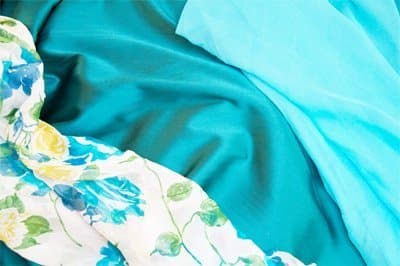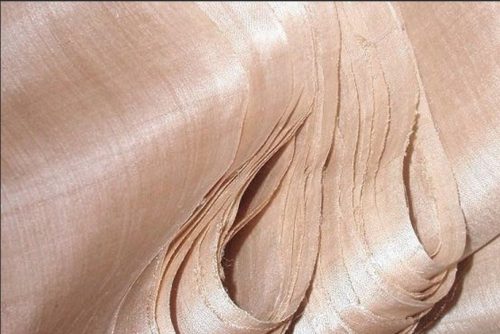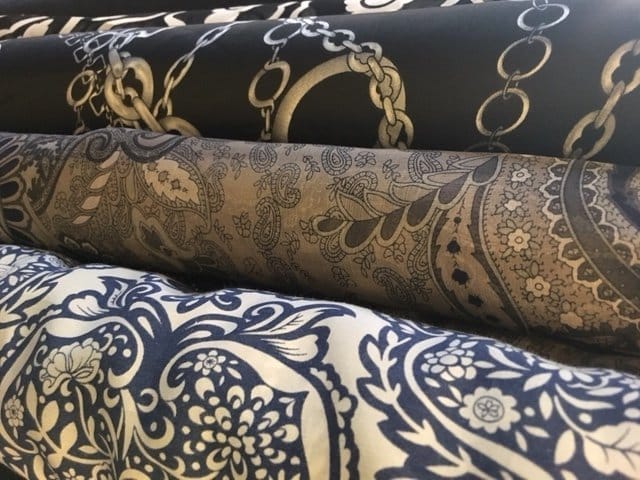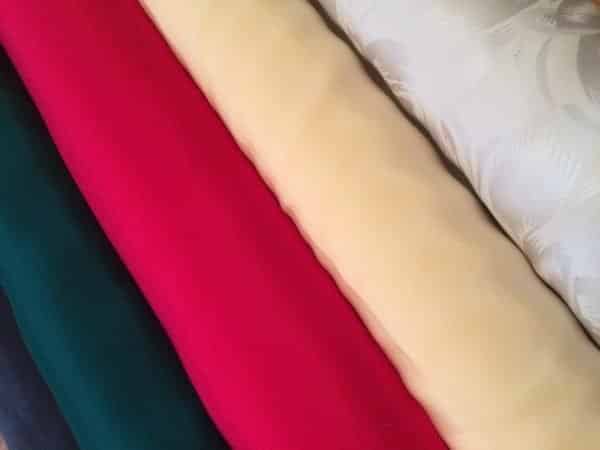
Cold weather makes us want to sew something hot. Time to make some lingerie or a special dress. That means hunting for the right kind of silk. With so many types, which one should you choose?
PFI Supply (www.pfisewing.com) offers fabric just for this occasion — including plenty of silks in a broad range of colors. Here are some of the most requested kinds and how to use them.
How silk is made
Silk is one of the oldest known natural fibers. Most silk originates in China, India and Southeast Asia. Domestic mulberry silkworm pupae spin it. Commercial growers kill the pupae before they emerge as adult moths. That way, the cocoon can be unraveled as one long continuous unbroken thread.
 Peace silk allows the moth to eat a hole in the cocoon to emerge. The hole makes it impossible to unreel the cocoon. So the fiber must be spun. The result is a more matte finish with a rougher look. Peace silk is also called wild silk.
Peace silk allows the moth to eat a hole in the cocoon to emerge. The hole makes it impossible to unreel the cocoon. So the fiber must be spun. The result is a more matte finish with a rougher look. Peace silk is also called wild silk.

Chiffon. If you can sew sheer, you can sew most everything. Soft, light and fragile, chiffon is a balanced plain weave with hight-twist crepe yarns used in both warp and weft. Sew on the straight grain before you try sewing bias. Save the selvages to help stabilize your seams.
 Georgette. What’s the difference from chiffon? Both fabrics are sheer. Georgette has a more substance with a cloudier look. Its fibers are twisted and alternate every one or two yarns from an “S” to a “Z”, giving a pebbly, crêpe feel. It is stretchier and harder to control than chiffon. Use it for lingerie, nightwear, blouses, dresses, evening and bridal wear. It’s said to be named for a French milliner, Mme. Georgette de la Plante. who used this fabric a great deal.
Georgette. What’s the difference from chiffon? Both fabrics are sheer. Georgette has a more substance with a cloudier look. Its fibers are twisted and alternate every one or two yarns from an “S” to a “Z”, giving a pebbly, crêpe feel. It is stretchier and harder to control than chiffon. Use it for lingerie, nightwear, blouses, dresses, evening and bridal wear. It’s said to be named for a French milliner, Mme. Georgette de la Plante. who used this fabric a great deal.

Charmeuse is the queen of silk, the lightest of silk satins and most difficult to sew. Of all woven fabric, it is the smoothest and most lustrous, thus most desirable. The warp yarns float over weft yarns. The more the floats, the more the luster. So don’t press charmeuse or you’ll flatten the floats and leave “burnished” dull spots. Use a seam stick, seam buffers (such as strips of paper under the seam allowances) and the tip of a mini-iron if you must press seams. Charmeuse snags easily and holes are permanent so don’t overwork it. Sew it once and sew it right.
For more details on how to work with silk, visit PFI’s lingerie, dresses and shirt classes.




